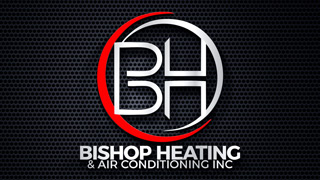
You shouldn’t be forced to give up comfort or empty your wallet to keep your residence at a refreshing temperature during summer weather.
But what is the best temp, exactly? We review recommendations from energy specialists so you can select the best setting for your family.
Here’s what we advise for the most energy-efficient setting for air conditioning in Bishop.
Recommended Thermostat Settings for Summer
Most families find setting the thermostat at 72-73 degrees is most comfortable. However, if there’s a big difference between your inside and exterior temps, your electricity expenses will be greater.
This is our advice based on the U.S. Department of Energy (DOE) and ENERGY STAR®.
While at home: 78 degrees. While that appears hot, there are approaches you can keep your house cool without having the AC on frequently.
Keeping windows and curtains shut during the day keeps cool air where it needs to be—within your home. Some window solutions, such as honeycomb shades or plantation shutters, are created to deliver extra insulation and better energy efficiency.
If you have ceiling fans in your house, the DOE says you can move thermostat temps about 4 degrees warmer without compromising comfort. That’s due to the fact they refresh through a windchill effect. Since they cool people, not spaces, shut them off when you exit a room.
If 78 degrees still feels too hot at first glance, try doing an experiment for approximately a week. Start by upping your setting to 78 degrees while you’re home. Then, progressively lower it while following the tips above. You might be astonished at how refreshed you feel at a higher temperature setting.
While away: 88 degrees. There’s no rationale for keeping the AC working all day while your residence is unoccupied. Moving the temperature 7–10 degrees warmer can save you an estimated 5–15% on your air conditioning expenses, according to the DOE.
When you come home, don’t be tempted to set your thermostat below 78 to cool your home more rapidly. This isn’t productive and usually results in a bigger electrical bill.
A programmable thermostat is a good approach to keep your settings in check, but you have to set programs. If you don’t use programs, you run the risk of forgetting to move the set temperature when you take off.
If you want a convenient remedy, think about getting a smart thermostat. This thermostat links with your phone, so it realizes when you’re at home and when you’re gone. Then it intuitively modifies temperature settings for maximum savings. How much exactly? About $180 annually on heating and cooling, according to ENERGY STAR.
Another plus of having a smart thermostat? You can use your phone to watch and change temperature settings from almost anywhere.
While sleeping: Around 70 degrees. While ENERGY STAR recommends 82 degrees, that might be unbearable for most families. Most people sleep better when their sleeping space is chilled, so that’s why the National Sleep Foundation recommends 60–67 degrees. But that may be too chilly, based on your PJ and blanket preference.
We advise running a comparable test over a week, moving your temp higher and slowly turning it down to choose the best temperature for your residence. On mild nights, you could discover keeping windows open at night and running a ceiling fan is a superior option than using the air conditioner.
More Approaches to Conserve Energy This Summer
There are additional ways you can save money on utility bills throughout hot weather.
- Buy an energy-efficient AC system. Central air conditioners only work for about 12–15 years and lose efficiency as they age. A new air conditioner can keep your house cooler while keeping utility bills small.
- Set regular air conditioner maintenance. Annual air conditioner maintenance keeps your equipment operating properly and could help it work more efficiently. It might also help extend its life cycle, since it allows techs to find seemingly insignificant issues before they cause a major meltdown.
- Replace air filters regularly. Follow manufacturer instructions for changing your air filter. A clogged filter can result in your system short cycling, or turn on and off too frequently, and drive up your cooling.
- Check attic insulation levels. Just about 90% of homes in the U.S. don’t have adequate insulation, according to the Insulation Institute. Many southern climates require 13–14” of attic insulation, while northern climates should have 16–18”.
- Have your ductwork checked. Ductwork that has loosened over time can leak cold air into your attic, walls or crawl space. This can create huge comfort issues in your home, including hot and cold spots.
- Seal cracks, doors and windows. Keep muggy air in its place by closing cracks. You can also caulk or weather strip doors to trap more conditioned air indoors.
Save More Energy This Summer with Bishop Heating & Air Conditioning
If you are looking to conserve more energy during hot weather, our Bishop Heating & Air Conditioning pros can help. Reach us at 760-784-9034 or contact us online for more info about our energy-saving cooling options.
